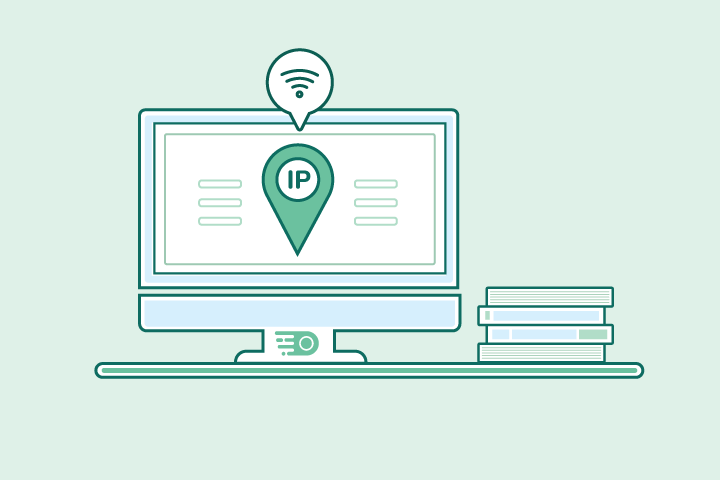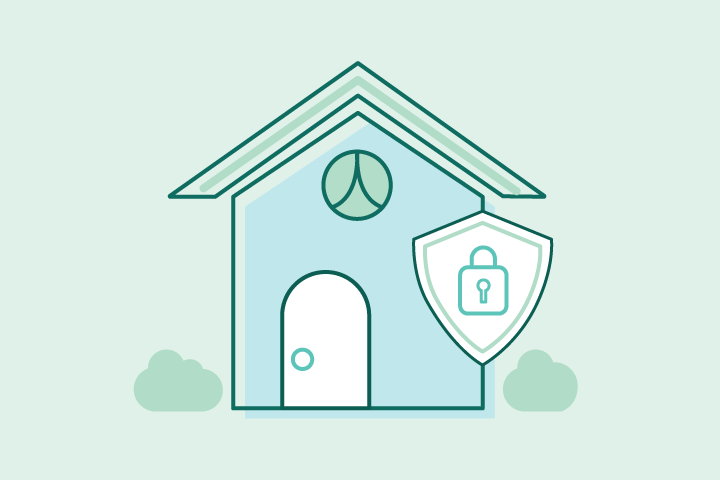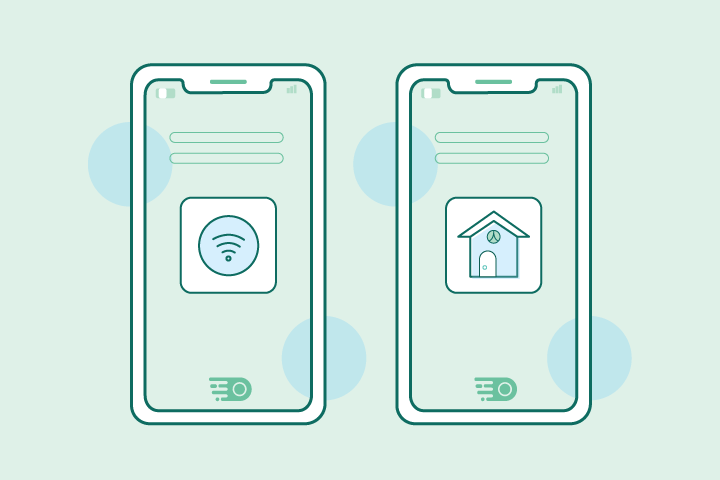10 Ways to Secure Your Home Network
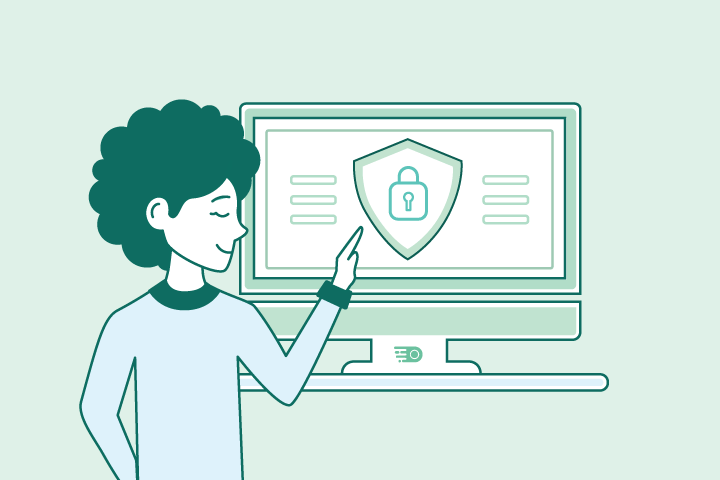
HighSpeedOptions prides itself on providing honest, quality content. While we may be compensated when you make a purchase through links on our site, all opinions are our own. Here's how we make money.
Table of Contents
If you’re wondering how to secure your home network, you’re not alone. Between laptops, phones, smart TVs, gaming consoles, and smart home devices, your Wi-Fi manages a lot of devices, and each one is a way into your digital life.
The good news is that you do not need to be an expert to secure your home network. Simple changes in your Wi-Fi router settings can make it difficult for anyone to snoop, use your internet bandwidth, and access any private information in your household.
Here are 10 easy step-by-step tips you can use to secure your home Wi-Fi network and data.
Search top internet providers for the best experience on your home network.

Key Takeaways: How to Secure Your Home Network
- Change default passwords. Update your router admin login and Wi-Fi password to strong, unique passphrases.
- Turn on strong Wi-Fi encryption. Use WPA3 if your router supports it, or at least WPA2 with AES.
- Keep everything updated. Turn on automatic updates for your router, computers, phones, and smart home devices.
- Segment your network. Use guest and/or IoT networks so visitors and smart devices aren’t on the same network as your personal devices.
- Disable risky features. Turn off WPS, remote management, and other features you don’t actively use.
- Make security a habit. Do a “Wi-Fi checkup” every month to review devices and settings
Why Is Securing Your Home Network So Important?
Your home network is the backbone of your digital life. It’s how you:
- Work remotely and join video calls
- Stream movies, music, and live TV
- Play online games, shop, and manage finances
- Control smart lights, cameras, locks, and thermostats
If your home Wi-Fi network isn’t secure, it can:
- Expose sensitive information like passwords, banking info, and personal documents
- Let strangers steal your internet connection and slow down your speeds
- Allow for illegal activity tied to your IP address
The goal isn’t perfection, it’s protection. Making a few simple changes can reduce the chances of anyone accessing your home Wi-Fi network or devices.
10 Practical Ways to Secure Your Home Network
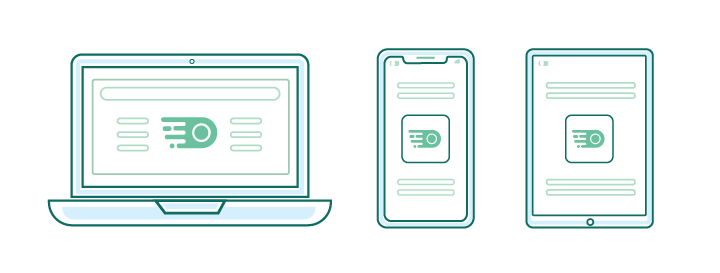
These tips work with almost any modern router and Wi-Fi setup. You don’t have to do them all at once. Pick a few to start and the rest when it’s convenient for you.
Each step includes what it does and how to set it up.
1. Change Your Login & Wi-Fi Password
Most routers have default usernames and passwords like “admin/admin.” Change them as soon as you can to establish your first, and easiest, line of defense.
How to do it
- Look for the sticker on your router with the router’s admin web address (often something like 192.168.0.1 or 192.168.1.1).
- Type that address into your browser and log in with the admin username and password, which are on the same sticker as the admin web address.
- Find the Administration or System section and:
- Change the admin username (if allowed).
- Change the admin password to a long, unique passphrase (12+ characters; mixing letters, numbers, and characters is best).
- Then, in the Wireless or Wi-Fi section:
- Change your Wi-Fi password, making it as strong as possible.
- Use a password manager to store both passwords so you don’t have to memorize them.
Pro tip: Update your Wi-Fi and router passwords every few months or if you think too many people have the current password.
2. Keep Your Router and Devices Updated
Why it matters
Your router has a built-in operating system called firmware. Just like your phone or computer, it needs security updates to patch bugs and vulnerabilities. Outdated firmware is an easy target for cybercriminals.
How to do it
- Log into your router’s admin page (see step 1).
- Look for a Firmware, Update, or System section.
- Check if there’s a newer version available and follow the prompts to update.
- If your router offers automatic updates, turn that option on so you won’t have to worry about it in the future.
- While you’re at it, set up automatic updates on all of your devices (phone, laptop, tablet, etc.).
Pro tip: If your router is more than 5 years old and no longer gets updates, it may be time to upgrade to a newer model that supports current security standards and offers improved networking.
3. Change the SSID Broadcast Name
Why it matters
Your network name, or Service Set Identifier (SSID), is what you see when looking at a list of available Wi-Fi networks from your phone or laptop. Default names can reveal the router brand and model, which only makes a hacker’s job easier. It’s best to change it to a unique name, and to protect your privacy, do not include your address or last name. Anyone within range of your network can see your SSID as an available network.
How to do it
- Log into your router admin page (see step 1).
- Go to the Wireless or Wi-Fi settings.
- Find the field labeled SSID or Network Name.
- Change it to something unique but not personally identifying (“BookNookWiFi,” not “SmithFamilyWiFi” or your street address).
- Save changes and reconnect your devices to the new network name.
At the very least, we recommend updating your username and password on your Wi-Fi router. This is an easy first line of defense.
4. Use Strong Wi-Fi Encryption (WPA3 or WPA2-AES)
Why it matters
Encryption scrambles the traffic on your Wi-Fi so other people can’t easily snoop or steal. Older standards like WEP are weak and can be exploited in minutes.
How to do it
- In your router admin page, go to Wireless, Wi-Fi, or Security settings.
- Find Security Mode, Encryption, or Authentication.
- Choose:
- WPA3-Personal if available (best option), or
- WPA2-Personal (AES) as the minimum you should use.
- Avoid WEP, TKIP, or “Open” network options.
Pro tip: If older devices can’t connect after you switch to WPA2-AES or WPA3, it may be time to retire those devices for your security.
5. Install Security Software on Your Devices
Why it matters
Even with a secure home network, malware and viruses can still sneak in through downloads, apps, and websites. Security software helps block malicious files, unsafe websites, and suspicious activity on your devices.
How to do it
- On Windows or Mac computers:
- Use built-in tools (like Windows Security) and install a reputable antivirus or internet security suite.
- On phones and tablets:
- Keep the operating system updated and consider security apps from trusted providers.
- Turn on browser protections like:
- Safe browsing, anti-phishing filters, and tracking protection.
Pro tip: Avoid running more than one antivirus suite. More than one will slow down your system and cause conflicts.
6. Create a Guest Wi-Fi Network
Why it matters
Guests and smart devices (such as IoT devices like cameras, smart plugs, light bulbs, and thermostats) don’t need direct access to your personal computers and files. Creating a guest network and putting devices on a separate network helps contain any security issues if a device is compromised.
How to do it
- In your router’s settings, look for ‘Guest Network’ or ‘Guest Wi-Fi’.
- Turn on the guest network and:
- Give it a separate network name (SSID).
- Set a unique password (different from your main network).
- If your router supports it, set up a dedicated IoT network and move smart devices there.
- Make sure the guest and IoT networks cannot access local devices (like shared folders or printers) on your main network if possible.
7. Turn Off WPS and Unnecessary Remote Features
Why it matters
Wi-Fi Protected Setup (WPS) makes it easy to connect devices, but it also exposes security holes. Other features like Universal Plug and Play (UPnP) and remote management can give attackers ways into your home network if they’re enabled and not secured.
How to do it
- Log into your router admin page (see Step 1).
- Look for WPS and set it to Off or Disabled.
- Find UPnP and turn it off unless a specific device or app truly requires it.
- Locate Remote Management, Remote Access, or similar, and disable it if you don’t actively use it.
Pro tip: If you do need remote access to your network, use a vendor app with strong passwords and multi-factor authentication (MFA), or consider using a virtual private network (VPN) instead of open remote management.
8. Watch Out for Phishing and Scams
Why it matters
Many attacks don’t target your router directly; they target you. Phishing emails, texts, pop-ups, and fake websites try to trick you into sharing login details or downloading malware.
How to do it
- Be suspicious of messages that:
- Urgently demand payment or password resets.
- Claim to be from your bank, government, or a package delivery service you weren’t expecting.
- Always double-check the sender’s email or phone number and the website address before entering credentials.
- Go directly to a company’s website or app instead of clicking links in emails or texts.
- Use your email provider’s “Report phishing” function to help filter future scams.
Pro tip: Teach everyone in your household, even the kids, how to spot fake messages. Encourage them to ask you before clicking on anything that seems off.
9. Use a VPN When You Need Extra Privacy
Why it matters
A VPN (virtual private network) encrypts your internet traffic and routes it through a secure server. That makes it harder for others to see what you’re doing online and can keep your data safer. We highly recommend using a VPN while on a public Wi-Fi.
How to do it
- Choose a reputable VPN provider or app with good reviews and a clear privacy policy.
- Install the VPN app on devices you use outside the home (laptop, phone, tablet).
- Turn the VPN on when:
- You’re on public Wi-Fi (cafes, airports, hotels).
- You’re traveling and using unfamiliar networks.
Pro tip: At home, a VPN can add another layer of privacy, but it doesn’t replace strong router security. You still need strong passwords and updated software.
10. Turn On Your Router Firewall and Monitor Your Network
Why it matters
Most routers include a built-in firewall that can block unwanted traffic. If it’s turned off or misconfigured, your network may be exposed. Keep an eye on the devices that are connected to your Wi-Fi to catch intruders.
How to do it
- In your router admin page, look for Firewall, Security, or Advanced settings.
- Make sure your router firewall is turned On.
- Locate the Connected Devices, Attached Devices, or Client List section.
- Look through the list for anything you don’t recognize:
- If you see unknown devices, change your Wi-Fi and router admin passwords immediately.
- Reconnect your own devices with the new password.
Pro tip: Put a reminder on your calendar once a month for a quick “home Wi-Fi security check” to review connected devices and settings.
Quick Home Network Security Checklist
Use this checklist to confirm your home Wi-Fi network is secure:
- I changed the default router admin username and password.
- I’m using a strong, unique Wi-Fi password.
- My Wi-Fi encryption is set to WPA3 or WPA2-AES (not WEP or “open”).
- My router firmware and devices are set to update automatically.
- I created a guest network (and an IoT network if possible) for visitors and smart devices.
- WPS, UPnP, and remote router management are turned off (unless I truly need them).
- I use security software and phishing protection on my main devices.
- I periodically check my router’s connected devices list for anything unfamiliar.
If you’ve done most of these, your home network security is already in better shape than many households.
Keep Your Home Network Locked Down
Your home network powers almost everything you do online: work, school, streaming, gaming, shopping, and more. Leaving it exposed is a bit like leaving your front door unlocked and hoping nobody tries the handle.
The good news is that securing your home network doesn’t have to be complicated. Changing default passwords, enabling strong Wi-Fi encryption, updating device software, and using guest or IoT networks go a long way toward keeping your data and devices safe.
Treat these steps as a routine, not a one-time project. Do a quick Wi-Fi checkup each month, and you’ll stay one step ahead of the most common threats.
If you’re ready to take the next step, you can also check internet providers in your area to see if any offer more secure Wi-Fi options, such as newer gateways, better equipment, or upgraded plans that support your smart home.
FAQs: Securing Your Home Network
Start with your router. Change the default admin login and your Wi-Fi password to long, unique passphrases, and turn on strong encryption, WPA3 if available, or at least WPA2-AES. Keep your router firmware and all connected devices updated and disable extras like WPS and remote management if you don’t need them. Whenever you can, use separate guest and IoT networks for visitors and smart devices, install reputable security software, and stay alert for phishing emails and fake websites trying to trick you into giving up passwords.
For most home networks, WPA3-Personal is the most secure Wi-Fi encryption option. It offers stronger protection against password-guessing and eavesdropping than older standards. If your router doesn’t support WPA3, choose WPA2-Personal with AES encryption; that’s still considered secure for typical home use. Avoid older options like WEP, WPA with TKIP, or “open” networks that don’t use any encryption at all, as these can often be cracked quickly or allow anyone nearby to see your traffic. If your router can’t support at least WPA2-AES, it’s probably time to upgrade.
Plan to change your Wi-Fi password and router admin password every three to six months. Regularly updating these credentials helps limit how long an old or leaked password can be used against you. You should also change them right away if you’ve shared your Wi-Fi password with a lot of people over time, or if you suspect someone is using your network without permission. When you update passwords, make sure they’re strong, unique passphrases rather than simple words or reused logins from other accounts.
To spot unwanted guests on your Wi-Fi, log into your router’s admin page and look for a section called something like “Connected Devices,” “Attached Devices,” or “Client List.” This will show you the names or MAC addresses of devices currently using your network. If you see devices you don’t recognize, or far more devices than you own, someone else may be on your Wi-Fi. When that happens, the safest move is to change both your Wi-Fi password and your router admin password, then reconnect only your own devices. While you’re in the settings, make sure your network is using WPA3 or WPA2-AES encryption for better security.
You need a virtual private network (VPN) most when you’re on public or unsecured Wi-Fi, because it encrypts your connection and helps keep snoopers from seeing what you’re doing. At home, a VPN can still add an extra layer of privacy by hiding your activity from your provider and making it harder for websites to track you, but it’s not a replacement for basic security. A VPN won’t fix weak passwords, outdated firmware, or risky router settings; it works best on top of the other steps in this guide. Think of it as an optional extra shield rather than the foundation of your home network security.
Yes, a guest Wi-Fi network is generally more secure for both visitors and smart home devices. It keeps their devices separate from your main network, which helps protect your personal computers, phones, and files if a guest device is infected with malware. Many smart homes and IoT devices don’t have strong built-in security, so placing them on a guest or dedicated IoT network limits the damage if one of them is compromised. You can also turn the guest network off when no one is visiting for extra peace of mind. It’s a simple change that adds a lot of separation and control to your home network setup.
The fastest way to secure your home Wi-Fi network is to make a few quick changes in your router’s settings. Log into the router’s admin page, change the default admin login and Wi-Fi password to long, unique passphrases, and set your Wi-Fi security to WPA3 (or WPA2-AES if WPA3 isn’t available). Then, turn off WPS and any remote management features you don’t use, and enable automatic firmware updates if your router supports them. These steps will close the most common ways attackers get into home networks.




